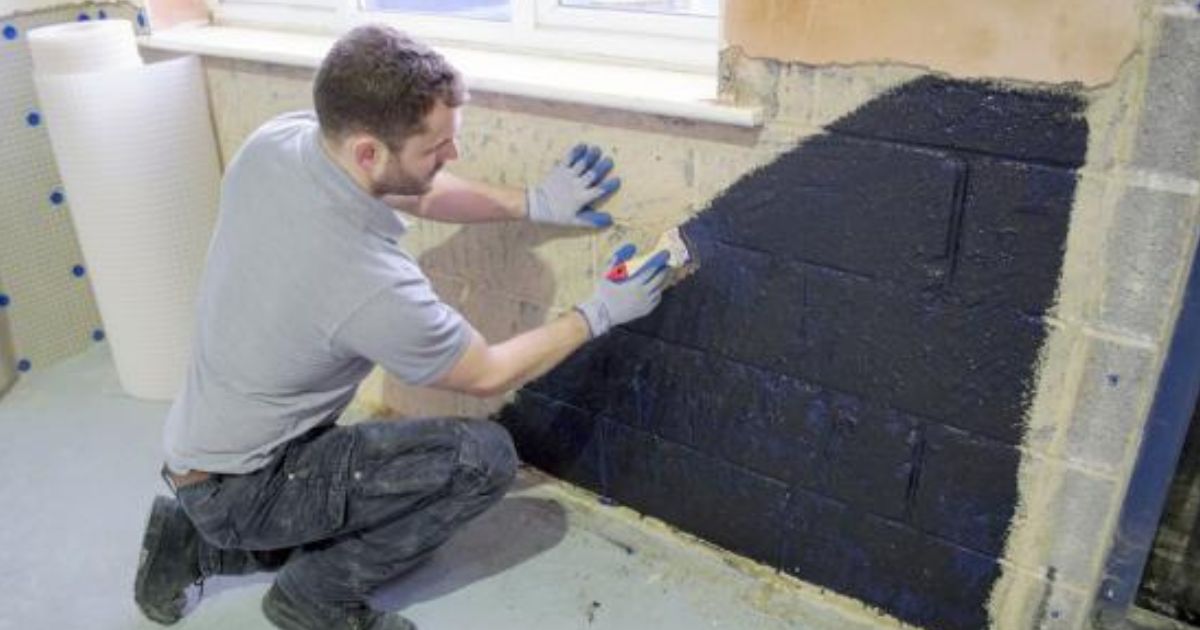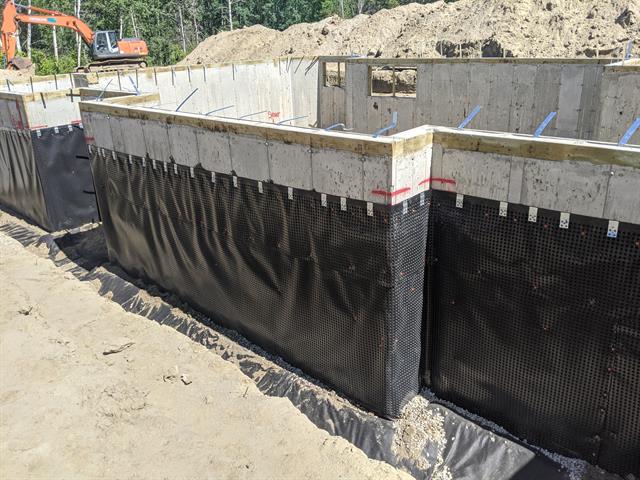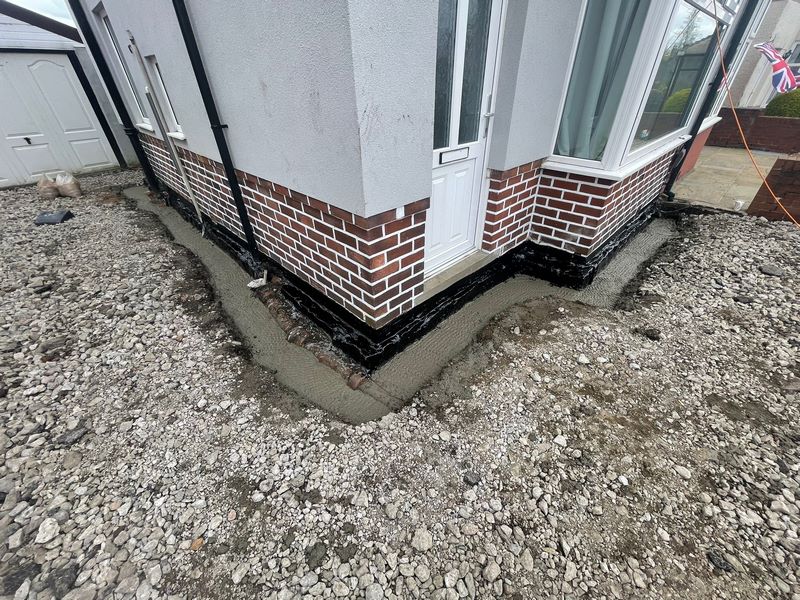Discovering the Various Methods and Solutions for Effective Damp Proofing
Wetness in structures positions considerable obstacles to both structural integrity and indoor air quality. Various techniques and services have actually arised to fight this prevalent concern. From traditional damp-proof membranes to ingenious chemical therapies, each technique uses one-of-a-kind advantages. Understanding these options is essential for effective moisture control. Picking the best solution depends on particular building problems and demands, triggering further exploration into the most effective moist proofing techniques readily available.
Recognizing the Reasons For Moisture
Although dampness can emerge from numerous sources, comprehending these causes is important for efficient remediation. Commonly, wetness stems from three main sources: increasing damp, permeating moist, and condensation. Climbing moist occurs when groundwater takes a trip up-wards with porous products, such as brick or stone, frequently because of a lack of an efficient barrier (mould treatment newcastle). Passing through moist is generally triggered by outside factors, consisting of roofing system leakages, defective gutters, or harmed wall surfaces, enabling water to penetrate a building. Condensation, on the other hand, arises from excess moisture airborne, typically exacerbated by inadequate ventilation and temperature level differences, bring about water droplets basing on surfaces. Recognizing these underlying problems is important, as each kind of moisture calls for a tailored technique for removal. Proper assessment helps in figuring out one of the most effective solutions, eventually securing the architectural integrity of a building and boosting interior air top quality
Typical Damp-Proof Membranes

Chemical Damp-Proofing Solutions
Chemical damp-proofing remedies offer an innovative approach to stop wetness intrusion in buildings. These methods generally include the application of fluid chemicals that permeate stonework and create a barrier versus climbing wet. Frequently utilized chemicals consist of silanes, siloxanes, and various other water-repellent agents that react with surface area products to produce a hydrophobic layer.The application process normally needs drilling openings into the wall surfaces, infusing the chemical remedy, and permitting it to heal. This approach is especially beneficial for older structures where traditional damp-proof membrane layers may be impractical. Chemical damp-proofing can be less turbulent and much more cost-efficient than substantial remodelling projects.While reliable, these options depend on proper application and environmental problems for peak performance. mould treatment newcastle. Normal maintenance and surveillance are vital to guarantee the durability of the damp-proofing treatment. Overall, chemical damp-proofing represents a functional alternative for protecting buildings versus moisture-related damage
Tooth Cavity Wall Building Strategies
Dental caries wall building and construction strategies provide many advantages, specifically in dampness control and power effectiveness. By including an air space between 2 layers of masonry, these wall surfaces effectively mitigate water ingress while boosting insulation. This mix not only protects frameworks from moisture yet additionally adds to lowered power intake.
Benefits of Cavity Walls
When taking into consideration effective moist proofing approaches, the advantages of tooth cavity walls attract attention plainly. Dental caries walls include 2 different layers, developing an air space that successfully minimizes dampness infiltration. This layout decreases the threat of wetness, as the external wall surface acts as a barrier against rainfall and water access. Furthermore, tooth cavity walls improve thermal insulation, which contributes to energy efficiency by decreasing heat loss. They also give audio insulation, assisting to develop a quieter interior atmosphere. The air space enables for ventilation, which assists in dampness control and minimizes the probability of mold and mildew development. These advantages not only boost the general convenience of a structure yet additionally add to its long life and structural stability.
Dampness Control Methods
Effective wetness control methods are vital in tooth cavity wall construction to guarantee long-lasting security versus dampness. One key method includes the consolidation of weep holes, which assist in water drainage from the dental caries, protecting against accumulation. Furthermore, the use of breathable membrane layers can aid take care of wetness degrees while allowing entraped vapor to get away. Proper placement of insulation is likewise critical, as it should not obstruct drain paths. Additionally, making sure that the external fallen leaves of the cavity wall surface are built with waterproof products boosts total toughness. Routine upkeep checks are important to identify any clogs or damage early, securing the structure's honesty. Eventually, a mix of these methods creates a robust protection against wetness intrusion in tooth cavity wall surfaces.
Insulation and Power Performance
Insulation plays a vital duty in improving energy efficiency within tooth cavity wall building. By including shielding products, these wall surfaces produce a thermal barrier that decreases heat loss and minimizes power consumption. Reliable insulation not just aids maintain a secure interior temperature but additionally alleviates the danger of dampness, as it protects against condensation within the wall surface tooth cavity. Different techniques, such as the use of stiff foam boards or mineral wool, can be used to attain ideal insulation efficiency. Furthermore, proper installation is necessary to ensure that spaces and voids are lessened, which can otherwise endanger energy effectiveness. Inevitably, a well-insulated dental caries wall surface contributes substantially to overall sustainability and reduces cooling and heating expenses for house owners.
Exterior Damp Proofing Methods
Exterior moist proofing methods are essential for shielding structures from dampness infiltration. 2 efficient methods include the application of waterproof membrane layers and the installment of French drains pipes. These options help reduce water accumulation and maintain the integrity of structures.
Waterproof Membrane Layer Application
While numerous techniques exist for preventing wetness ingress, the application of water-proof membranes stays a very efficient exterior wet proofing method. These membranes are generally made from products such as polyethylene, rubber, or modified bitumen, supplying a durable barrier against water penetration. The setup procedure involves applying the membrane to the outside surface areas of walls or foundations, making sure full protection to avoid leaks. Proper bond and sealing at joints are crucial to optimizing efficiency. Water resistant membrane layers can be applied in different kinds, consisting of fluid coatings and sheet membranes, permitting flexibility based upon the details needs of the framework. This method not only safeguards buildings from moisture however likewise improves their durability and architectural stability.
French Drain Installation
One effective technique for handling groundwater and protecting against dampness build-up around a structure's foundation is the installation of a French drain. This drainage system includes a trench filled with gravel and a perforated pipeline that reroutes surface area water away from the foundation. Proper installment calls for mindful planning, ensuring that the drain inclines far from the framework to facilitate excellent water flow. Additionally, the area of the drain is vital; it needs to be positioned in areas susceptible to pooling or excess moisture. Normal maintenance, consisting of cleaning particles from the gravel and ensuring the pipeline stays unobstructed, is necessary for lasting effectiveness. Ultimately, a well-installed French drainpipe can considerably reduce the danger of water-related issues in cellars and foundations.
Inside Waterproofing Methods
Inside waterproofing techniques are essential for securing a structure's interior from moisture seepage and prospective water damages. These strategies commonly include the application of check here specialized materials and strategies created to create a wetness barrier within the structure. One typical strategy is making use of waterproof finishings or sealants on wall surfaces and floors, which stop wetness from permeating surfaces.Additionally, installing indoor drainage systems, such as sump pumps, can properly manage water build-up in basements and creep areas. Another method includes the use of vapor obstacles, which are set up to inhibit wetness activity from the ground right into living spaces.Moreover, resolving any kind of cracks or voids in walls or structures with proper sealants guarantees a thorough protection against water invasion. By applying these indoor waterproofing methods, residential or commercial property proprietors can substantially lower the threat of mold development, architectural damage, and other moisture-related problems. Appropriate implementation of these strategies is essential for long-term defense and structure stability.
Routine Maintenance and Evaluation Practices
Regular maintenance and assessment methods are important for guaranteeing the long-term effectiveness of damp proofing remedies in any kind of building. Routine checks enable homeowner to identify early signs of dampness breach, such as peeling off paint, mold and mildew growth, and moldy odors. These indicators can signal underlying issues that require immediate attention.Inspections ought to be conducted at least annually, concentrating on at risk locations like basements, crawl areas, and outside wall surfaces. Throughout these assessments, residential or commercial property proprietors must analyze sealants, drainage systems, and ventilation to verify they operate correctly.Additionally, keeping rain gutters and downspouts is important, as clogged systems can bring about water build-up near the foundation. Applying a routine maintenance timetable, along with prompt repairs, can significantly extend the life expectancy of damp proofing procedures and shield the structural honesty of the structure. Positive actions eventually add to the overall health and wellness of the living atmosphere.
Regularly Asked Questions
The Length Of Time Does Damp Proofing Generally Last?
The period of wet proofing effectiveness varies, commonly lasting between 20 to half a century. Elements such as application top quality, environmental problems, and maintenance methods considerably influence the durability of the wet proofing therapy.

Can I Damp Evidence My Home Myself?
The individual considered the usefulness of do it yourself damp proofing. With appropriate research and the ideal materials, it is feasible. Nonetheless, they also acknowledged the value of specialist assistance to guarantee lasting performance and protect against future issues.
What Are the Indicators of Inefficient Damp Proofing?
Signs of inefficient damp proofing consist of consistent mildewy smells, visible mold and mildew growth, peeling paint, damp patches on walls, and wood degeneration - mould treatment newcastle. Homeowners must deal with these concerns immediately to stop more damage and health and wellness worries
Does Damp Proofing Affect Indoor Air Top Quality?

Just How Much Does Professional Damp Proofing Expense?
Specialist damp proofing prices vary substantially, normally varying from $1,000 to $5,000 depending upon the residential or commercial property's dimension, the extent of the wet concern, and chosen techniques. Each circumstance calls for a customized analysis for exact pricing. Commonly, wetness stems from three key resources: rising moist, passing through damp, and condensation. When considering effective moist proofing techniques, the advantages of dental caries walls stand out prominently. External moist proofing methods are necessary for securing structures from wetness seepage. While numerous methods exist for stopping wetness access, the application of water resistant membrane layers continues to be a very effective outside wet proofing method. Indicators of inefficient damp proofing consist of persistent moldy odors, visible mold growth, peeling paint, damp spots on walls, and timber decay.
 Michael J. Fox Then & Now!
Michael J. Fox Then & Now! Charlie Korsmo Then & Now!
Charlie Korsmo Then & Now! James Van Der Beek Then & Now!
James Van Der Beek Then & Now! Julia Stiles Then & Now!
Julia Stiles Then & Now! Mason Reese Then & Now!
Mason Reese Then & Now!